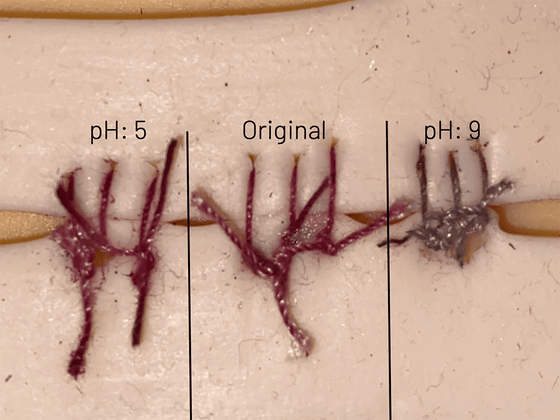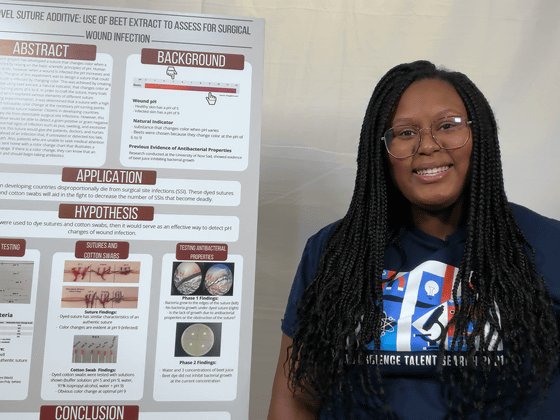Active high school students develop 'sutures that change color when infectious diseases are detected'

Dacia Tyler, an active high school student in the United States, has developed a suture that changes color in response to infection from a wound.
This High Schooler Invented Color-Changing Sutures to Detect Infection | Innovation | Smithsonian Magazine
https://www.smithsonianmag.com/innovation/high-schooler-invented-color-changing-sutures-detect-infection-180977345/
Tyler, who belongs to an on-campus club on African-American history and has made numerous efforts on racial equality, was interested in the issue of wound-borne infections in developing countries. According to a World Health Organization (WHO) study , low- and middle-income countries have an 11% chance of getting an infection from a wound after surgery, and in some African countries the problem is particularly serious. In cesarean section surgery, the probability that the mother will get an infection after cesarean section will reach up to 20%.
Tyler, who knew about suture research that senses the condition of scratches by changes in electrical resistance and communicates the infection status to smartphones and computers with built-in conductive materials, used this suture in electronic devices such as smartphones. We will try to improve it for the poor developing countries. In this way, under the guidance of chemistry teacher Carolyn Walling, Tyler took advantage of the property that 'when human skin is infected, the hydrogen ion index (pH) changes' and 'colors in response to infection from the wound. I created a suture that changes.
Healthy human skin normally has a pH of approximately 5, but upon infection it rapidly becomes alkaline and reaches a pH of 9. The suture created by Mr. Tyler realizes the function of changing color according to changes in pH by liquefying and soaking bright reddish purple vegetables and beets used for borscht. It is a suture that can be used in developing countries at a low cost and can check for infectious diseases without the need for electronic devices.
The following is the actual suture made by Mr. Tyler. You can see that the color changes from bright red to deep purple as the pH changes. This change in color development occurs in just 5 minutes.

This suture discolors over time and turns gray after 3 days at pH 9.

With the development of this suture, Taylor
Unfortunately, he couldn't make it to the podium at Regeneron Science Talent Search, but Taylor won the Jury's Special Award and spoke on behalf of the 40 finalists. As of March 2021, Taylor studied under Teresar Ho, a lecturer in microbiology at the University of Iowa, working on the issue that sutures soaked with beetroot solution could also be a breeding ground for infectious disease-causing bacteria. It is said that there is.

Related Posts:
in Science, Posted by darkhorse_log







